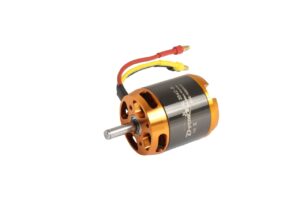The armature, which is made up of wrapped wire coils, acts as a two-pole electromagnet in a brushed DC motor. The commutator, a mechanical rotary switch, reverses the directionality of the current twice every cycle. As a result, the electromagnet’s poles pull and push against the permanent magnets along the exterior of the motor, allowing electricity to flow more freely through the armature. As the commutator’s poles cross the permanent magnets’ poles, the armature’s electromagnet’s polarity is reversed.
On the other hand, a brushless motor has a permanent magnet as its rotor. It also employs three stages of driving coils as well as a unique sensor that monitors rotor position. The sensor delivers reference signals to the controller as it tracks the rotor position. The coils are then activated in a systematic manner by the controller, one phase after the other.

Overall construction expenses are low.
Rebuilding is a common way to extend the life of a product.
Simple and low-cost controller
For fixed speed, no controller is required.
Ideal for use in harsh operating conditions
Less effective
Electrically noisy: The commutators’ switching motion causes a lot of electrical and electromagnetic noise by continually building and breaking inductive connections.
Lifespan: Brushes and commutators wear out because they are in constant direct contact with the shaft.
Contact:Mr Liu
Mobile:15869109368
Tel:86-571-89967020
E-mail:info@dawopu.com
Address:No151 ,ZiDingXiang Rd, Hangzhou. Zhejiang Province, China